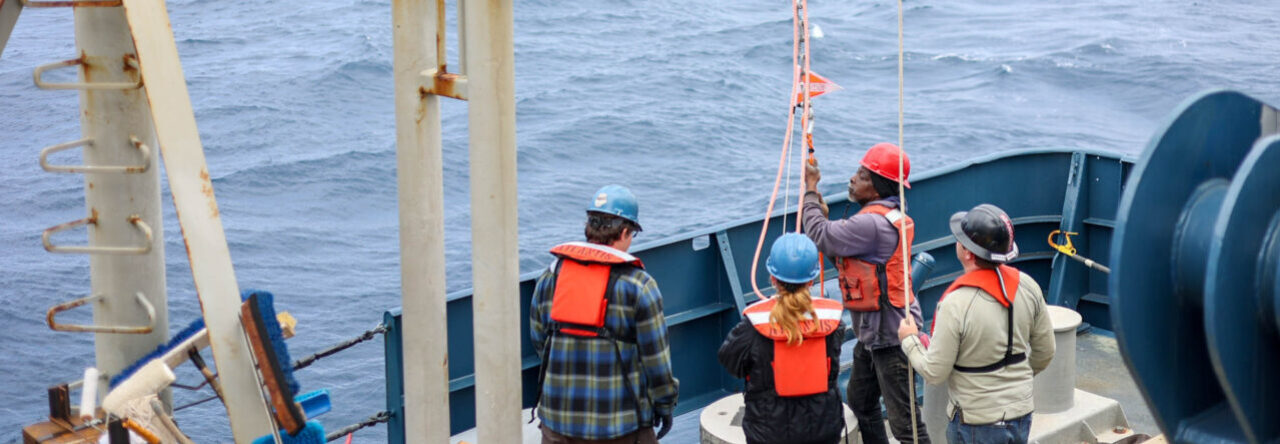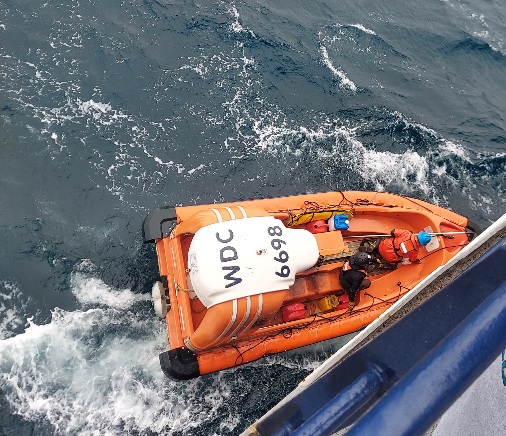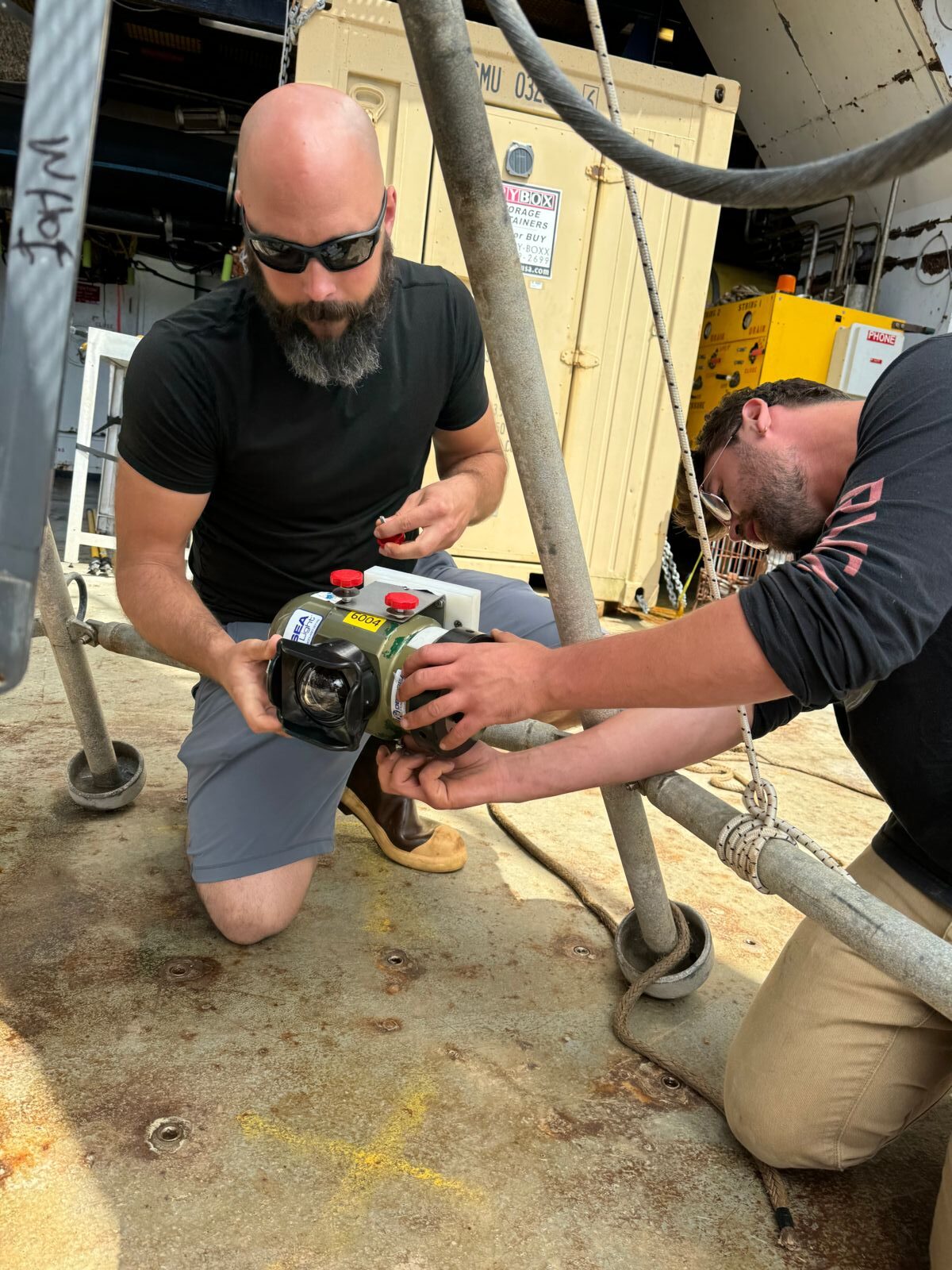Station 6 was east of Greenland and we arrived on Saturday the 13th and started coring on Sunday. One of those cores caught a piece of a sponge! We also were visited by a large pod of pilot whales on Sunday. There was a group of roughly 20 whales that were jumping and diving near the boat, and another group closer to the horizon.
Monday was a big day of coring and by Tuesday evening, we had finished the CTD cast and were headed onward towards station 7, our last station!
Usually transit days are more relaxed, but Wednesday and Thursday brought some excitement. First, we released our last Argo float on Wednesday, followed by an XBT probe to get water column temperature data from the location of deployment. XBT stands for Expendable Bathythermograph; “expendable” because the probe is launched into the water and not recovered. The probe is a small, torpedo shaped object that stays connected to the launching device by a delicate thread of copper wire which transmits the data back to the ship. Once we reach its maximum depth, you break the thin wire and are left with a temperature profile of the water column the probe fell through. XBTs are used on the Langseth for seismic, in which sound is used to map the ocean floor, and an XBT helps find the speed of sound through water, which is dependent on the salinity and temperature of the water.
A few hours later, we experienced some disruptions in power as one of the main engines had a kerfuffle. At this time, I was in the bridge and it was interesting to see how the captain and second mate managed the situation. After some troubleshooting, the engineering team were able to get everything back online.
On Thursday morning, we were notified by the Icelandic Coast Guard that we were the closest vessel to a sailing vessel in distress and asked to render aid. The sailboat lost its sails in a storm and was running out of fuel. We backtracked for a few hours until we were in sight of the sailboat. The second mate, third mate, and one AB went in the fast rescue boat to bring them jugs of fuel. It was a little unnerving to watch the little orange boat be rocked around in the cold waves, but they reached the sailboat safely twice to bring them about 50 gallons of fuel. The rest of the deck crew contributed to a successful deployment and recovery of the fast rescue boat.
Our excitement for Friday was crossing the Arctic Circle!! And it was Larkin’s (our awesome videographer/photographer/science communicator on board) birthday! We also had a meeting for planning demobilization once we reach port, which includes arranging for shipping containers, cranes, and forklifts.
We are expecting some big seas in the next few days and hopeful we still be able to find a weather window to get station 7 done before heading to Reykjavik. Home stretch!

Pod of pilot whales, photo by Lexi!

View from the bridge as the orange fast rescue boat crosses our bow.

Fast rescue boat just after it was deployed from its davit on port side.












